Khon masks on display at the Baiyoke Sky Hotel, Bangkok
The khon is a traditional mask play in Thailand which implies the wearing of masks by performers. The story that has been used for staging of the khon is the Ramakien, the Thai version of the Indian epic Ramayana. Staged in its entirety, the Ramakien is an immensely complex story with 138 episodes involving 311 different characters and taking more that 720 hours of continuous performance.
The mask is perhaps the most important characteristic of the khon, for through it more than any other thing else, one distinguishes the variety of roles.
Khon mask of the Holy Hermit Rusi from the collection of the Bangkok National Museum
The mask reflects personality of the dancer through colour and various features. Each mask possesses individual characteristics of shape, decoration, colour and facial expression. The mask designs of a demon are made to create a sense of ferocity and strenth, those of a human hero are majestic and graceful, and female masks are beautiful and gentle. There are also additional features for distinguishing the demon characters, such as the eyes which are of two types: bulging or crocodile. The mouths are also of certain types: clamping or snarling.
A mask of Rama, photo source
A mask of Thotsakan, the King of Lanka, photo source
A mask for Rama is always green, has delicate features, a faint smile to indicate his good nature, and a multi-tiered gold crown tapering to a spire. Thotsakan, the King of Lanka, generally has a green complexion too and the fierce expression of a snarling demon. He usually wears a crown with two tiers of faces, one of which represents his ten faces and a top one of a celestial face. Hanuman's mask is predominantly white but may have considerable ornamentation. His monkey helpers usually wear gold masks with bulging green-rimmed eyes and bright-red tongues.
A mask of Hanuman, photo source
Khon performer, photo courtesy Choo Yut Shing
In the making of these masks there are rules to follow because a slight error in colouring may easily lead to confusion. So the creation of the khon masks requires skilled workmanship. Masters follow conventions recorded in illustrated manuscript books and handed down fro generations by khon performers.
The process of creating a mask begins with structuring of the model with clay. Then the model is pasted with paper tissue by using rice flour paste as the adhesive. Pasting-up is done until it reaches an appropriate thickness. The the pasted model will be left to dry in the sun. Once it is dry, the pasted paper is removed by cutting the model in half and sewing the two separated portions together. Then the blank paper mask is lacquered and painted. No enamel paints can be used as this would produce a shining surface on the mask which would make it unsuitable for stage plays. The mask maker uses only powder colour pigments. To add some special beauty to the mask its forehead frame is decorated with glass or ruby flakes. The more luxurious masks even use mother-of-pearl as the material for artistic patterns on the mask.
photo courtesy Vee Satayamas
The most important part of khon mask making is the enlivening of the mask with lively eyes. This process is considered to be vital and religious ceremony is called for at the time of adding the eyes to the mask.
Divine and human roles no longer wear masks as well as women characters. But still there are more than one hundred different demon masks and more than 30 varieties of simian masks used in the khon nowadays.
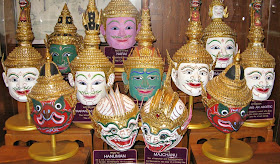
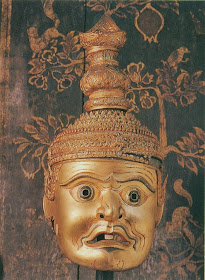
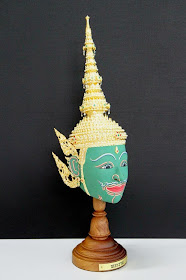

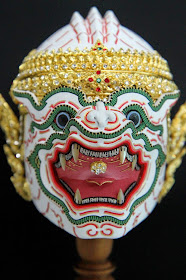
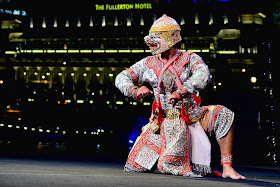




The mask play must be a special, unique show! I would love to see all those wonderful masks in action!!
ReplyDeleteI was reading your article and wondered if you had considered creating an ebook on this subject. Your writing would sell it fast. You have a lot of writing talent. face masks
ReplyDeleteLaser engraving can improve the efficiency of engraving, make the surface smooth and smooth, rapidly reduce the temperature of the carved non-metal materials, and reduce the deformation and internal stress of the carved objects. It can be widely used in the field of a fine carving of various non-materials.
ReplyDeleteCNC Cutting Cutter Machine Engraving Machine for Carved Wooden Furniture
https://amzn.to/3hlQRih
Hello..
ReplyDeleteI am thinking to buy one. can anyone know where to buy those masks?
Traditionally made masks would be my preference.
Cheers.